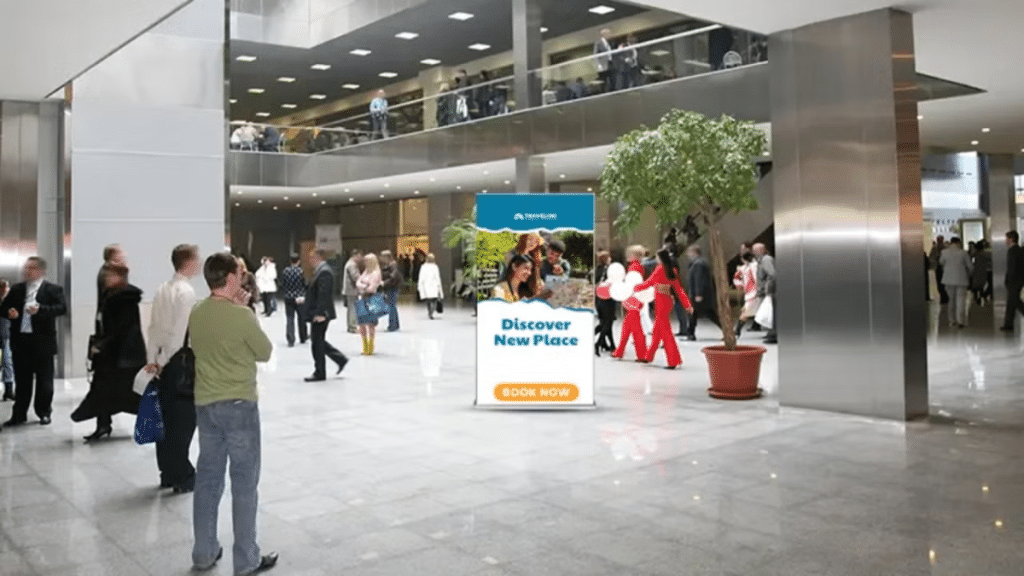At any industry event, first impressions operate on a tight timeline. Whether you’re exhibiting at a national expo or simply setting up a table at a local networking event, what people see in those first few seconds matters. That’s where banner stands do a lot of heavy lifting. Visually, they bridge the gap between anonymity and attention. But not all stands are created equal—and choosing the right one for your brand isn’t just about aesthetics. It’s about function, fit, and feel.
The truth is, a well-chosen banner stand can elevate even the most modest booth. The wrong one, on the other hand, can waste both time and budget. So how do you choose?
Know the Setting, Then Work Backwards
Before choosing a stand, you need to be honest about where and how it’s going to be used. An airy, well-lit trade show at a city convention centre demands a different setup from a high-street pop-up in February rain. Portability, durability and setup time can all fluctuate depending on the setting.
And then there’s size. Not just of the stand, but of the space you’re working with. It’s tempting to go for the biggest option available, but a stand that overwhelms your table or doesn’t fit in the boot of your car can quickly become a logistical headache. Start with constraints, not aspirations.
Understand the Different Types of Banner Stands
Once you’ve nailed down the where and when, it’s time to consider the what. The market is full of options—from retractable banners to tension fabric systems, L-banners to modular displays. Each has its place.
Retractable stands (often called roller banners) are probably the most common. They’re quick to set up, easy to store, and well suited to short-term or travelling displays. Tension fabric stands, while more involved to assemble, offer cleaner lines and are ideal for larger, more permanent installations.
Then there are hybrid or modular options that let you build entire backdrops or change panels based on campaign. These tend to cost more upfront but offer flexibility over time. It helps to discover our full display stand collection at Display Wizard to get a clearer picture of what’s possible, especially if your marketing strategy involves attending multiple events throughout the year.
Design Isn’t Just About Looks
Visuals matter, but clarity matters more. A common mistake brands make is overloading their banner with too much information. You’re not building a brochure, you’re crafting a signpost.
That means bold logos, concise messages and imagery that reads well from across a room. It should be obvious at a glance what your business does, even if someone only gives it two seconds. Ask yourself: if you took your logo off the design, would the banner still feel like your brand? If not, something’s off.
Also consider how the banner design will sit next to your other materials—tablecloths, flyers, even staff uniforms. It doesn’t need to match exactly, but it should complement. Cohesion builds trust, even when it’s subtle.
Think Long-Term (Even for Short-Term Use)
It’s easy to treat banner stands as throwaway items—print once, use once, store forever. But they don’t have to be single-use. Some systems allow you to change the graphics without replacing the whole frame, while others are sturdy enough to handle dozens of events before showing wear.
If you’re a brand with seasonal campaigns, new offers or changing services, think about modularity. Can you update messaging without replacing the entire stand? Can the hardware support multiple sizes or layouts? Small choices now can save big costs later.
Materials also play a role. PVC is cheap and lightweight, but can curl at the edges. Fabric offers a more polished look but requires gentler handling. Consider how often your team will be packing and unpacking these stands—because the lifespan isn’t measured in months, it’s measured in zips and unrolls.
Don’t Forget the Human Element
Finally, remember who will be handling the stand. If your team isn’t techy, avoid complicated systems. If you’re sending staff on solo setups, keep weight and assembly time in mind. A beautiful stand that takes 40 minutes to build won’t be appreciated by someone running late in a new city.
And don’t overlook practice. The best time to discover a missing screw or a confusing setup isn’t on the event floor. Have your team trial the stand in advance, ideally in the same setup they’ll use on the day. It’s a small step that can make a big difference in reducing stress—and making sure everything looks exactly how you imagined.
Final Thoughts
A banner stand might seem like a small detail in a big event strategy. But it’s also the first thing people see. That makes it part of your handshake, part of your greeting, part of your story.
Choosing the right one isn’t about overthinking or overspending. It’s about asking smart questions—about setting, design, usability and future-proofing—so that what you bring with you to an event actually works for you. And when it does, you’ll feel the difference before the first person even stops to chat.
